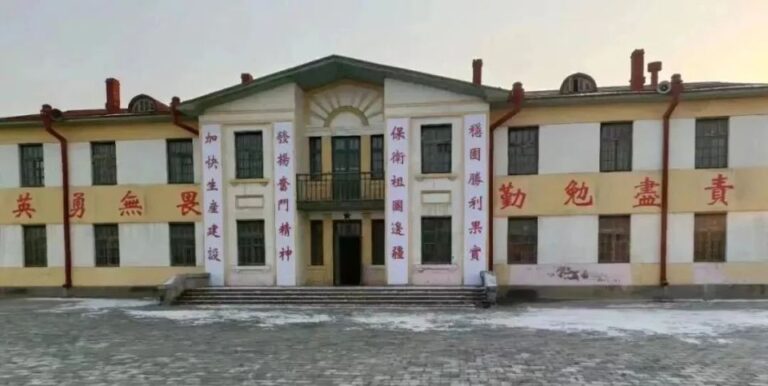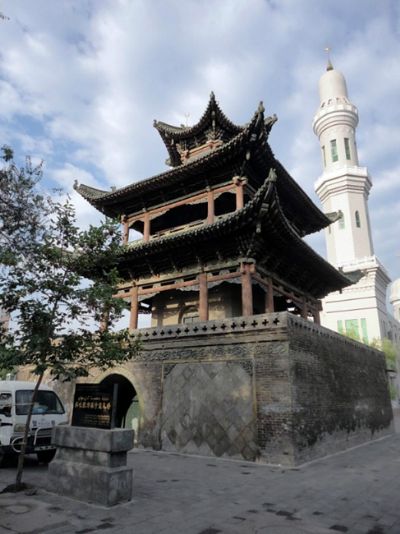Discover Aksu Tonggusi Baxi Chengzhi: A Cultural Journey Through Xinjiang
An Essential Guide to Visiting Aksu Tonggusi Baxi Chengzhi
In This Guide
- An Essential Guide to Visiting Aksu Tonggusi Baxi Chengzhi
- The Rich History of Aksu Tonggusi Baxi Chengzhi
- Main Highlights: What to See at Aksu Tonggusi Baxi Chengzhi
- Planning Your Visit: A Practical Guide
- Tickets, Hours, and Booking
- How to Get There
- Local Cuisine and Accommodation
- Frequently Asked Questions
- Final Thoughts on Your Trip
Nestled in the heart of the Xinjiang Uyghur Autonomous Region, Aksu Tonggusi Baxi Chengzhi offers a fascinating glimpse into China’s rich historical tapestry. This ancient site, known as the Tonggusi Baxi ruins, was once a significant fortress of the ancient state of Kucha and served as a military stronghold during the Tang Dynasty. As visitors approach, they are greeted by the remnants of imposing earthen walls and structures that whisper tales of a bygone era.
Spanning approximately 49,000 square meters, the site boasts a square layout with walls rising 6.2 meters high, constructed using a traditional technique that combines rammed earth with willow branches. The fortifications, which are remarkably well-preserved, include distinctive features such as protruding battlements and well-structured horse gates—elements that showcase the architectural prowess of the Tang period.
Discovered as early as 1949, the ruins have yielded significant archaeological finds, including residential remnants, wooden artifacts, and documents dating back to the Tang Dynasty, enriching our understanding of the political, military, and cultural dynamics of ancient Kucha. Declared a National Key Cultural Relic Protection Unit in 2006, Aksu Tonggusi Baxi Chengzhi is not only a pivotal site for researchers and historians but also a captivating destination for travelers seeking to immerse themselves in the rich legacy of the Silk Road.
The surrounding area enhances the experience with its diverse attractions, from the serene beauty of the desert flower fields to the vibrant local culture, making it a treasure trove for anyone eager to explore the hidden gems of Xinjiang. A visit to Aksu is not merely a journey through time; it’s an invitation to witness the resilient spirit of a region where history and nature harmoniously coexist.
The Rich History of Aksu Tonggusi Baxi Chengzhi
The Aksu Tonggusi Baxi Chengzhi, located in Xinjiang’s Xinhé County, is a remarkable historical site that bears witness to the rich tapestry of cultural and military history in the region. This ancient fortress, known as one of the largest in the former Kingdom of Kucha, dates back to the Tang Dynasty, specifically constructed during the height of the Anxi Protectorate, a significant military outpost established to maintain control over the Silk Road.

Aksu Tonggusi Baxi Chengzhi.
The fortress itself has a square layout, measuring approximately 250 meters in length from east to west and 230 meters from north to south, encompassing an area of about 49,000 square meters. Its walls rise to a height of 6.2 meters, built using a technique that combines rammed earth and willow branches, providing both strength and durability. The structure features prominent corner bastions and a grand architectural design, including defensive features like horse faces, which illustrate its strategic importance in safeguarding the region.
Excavations at the site, initiated as early as 1949, have unearthed remnants of residential buildings, wooden artifacts, textiles, and remnants of documents bearing the Tang Da Li era inscriptions. These findings provide invaluable insights into the daily lives of the inhabitants and the administrative practices of the time.
As a pivotal military stronghold, the Aksu Tonggusi Baxi Chengzhi played a critical role in the governance and military operations of the Anxi Protectorate, which was tasked with managing the vast and diverse territories of the Western Regions. This fortress served as a vital checkpoint along the Silk Road, facilitating trade and cultural exchanges between the East and West. Notable historical figures, including Zhang Qian, Li Chong, and Xuanzang, traversed these lands, leaving their mark on the historical narrative of the region.

Aksu Tonggusi Baxi Chengzhi.
In recognition of its historical significance, the site was designated as a key cultural relic protection unit by the State Council of China in May 2006. Today, it stands as a monumental testament to the ingenuity and resilience of ancient civilizations in Xinjiang, offering a glimpse into the political, economic, and cultural landscapes of the past.
Visitors to the Aksu Tonggusi Baxi Chengzhi can not only appreciate the architectural marvel of the ancient fortress but also engage with the rich history that shaped the development of the Silk Road and the interactions of diverse cultures within this unique geographical mosaic.
Main Highlights: What to See at Aksu Tonggusi Baxi Chengzhi
Nestled in the heart of Xinjiang’s Aksu region, the Aksu Tonggusi Baxi Chengzhi, or the Tonggusi Baxi Ancient City Ruins, stands as a remarkable testament to China’s rich historical tapestry. This ancient fortress, a prominent site of the historic Kucha Kingdom, offers visitors a glimpse into the military and cultural significance of the region during the Tang Dynasty.
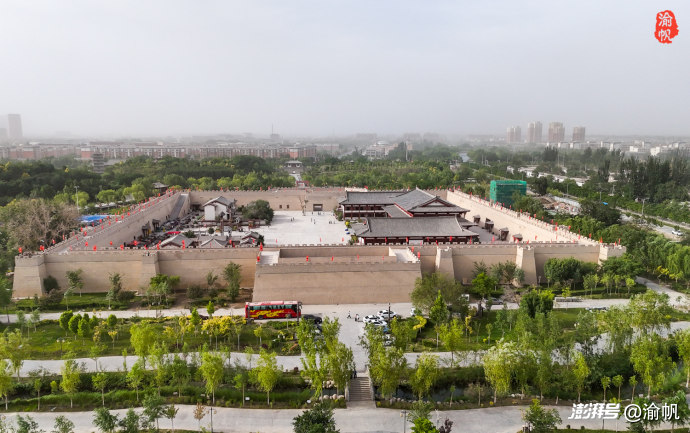
Aksu Tonggusi Baxi Chengzhi.
The ruins, measuring an impressive 250 meters in length and 230 meters in width, cover an area of approximately 49,000 square meters. Constructed during the Tang Dynasty, the city features towering walls made of rammed earth and willow branches, reaching heights of 6.2 meters. The unique architectural style is complemented by notable features such as protruding bastions at each corner and well-preserved horse gate structures, enhancing its military legacy.
Excavations at the site have revealed artifacts that date back to the Tang Dynasty, including remnants of houses, wooden implements, and textile fragments, along with ancient documents. These findings are crucial for understanding the political, economic, and cultural developments of the Kucha region and the broader context of the Tang Dynasty’s efforts in the Western Territories.
Designated as a National Key Cultural Relic Protection Unit in 2006, the Aksu Tonggusi Baxi Chengzhi is not only a historical site but also an essential part of the Silk Road’s heritage. It provides insight into the interactions between various cultures and the strategic military importance of this area as a bastion during tumultuous times.
Adjacent attractions enhance the visitor experience, including the Tianlaijiayi Scenic Area and the ancient city of Yuli Qiaotai, making Aksu a burgeoning destination for those eager to explore Xinjiang’s diverse cultural landscape. Whether you’re a history enthusiast or just curious about China’s past, a visit to the Tonggusi Baxi site promises an unforgettable journey through time.
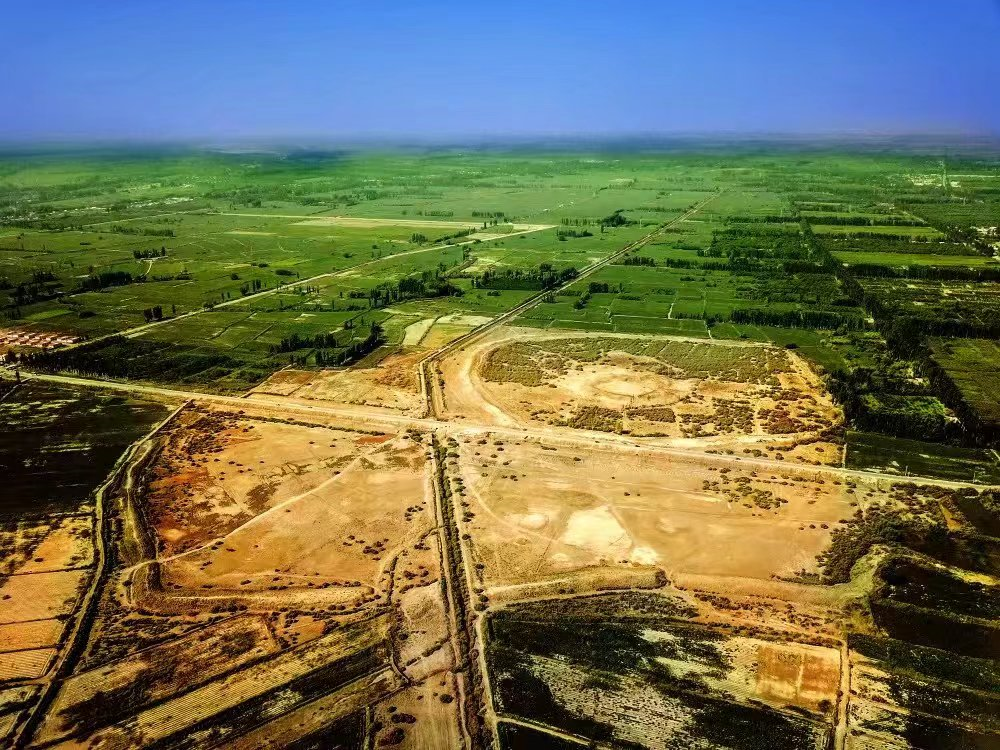
Aksu Tonggusi Baxi Chengzhi.
Planning Your Visit: A Practical Guide
Practical Guide to Aksu Tonggusi Baxi Chengzhi (通古斯巴西城址)
Location and Access
Aksu Tonggusi Baxi Chengzhi, located in the Xinhe County of Aksu, Xinjiang, is easily accessible by road. The site is about a two-hour drive from Aksu City, making it a feasible day trip for travelers exploring the region. Public transport options are limited, so renting a car or arranging for a local guide is recommended for convenience.
Opening Hours and Entry Fees
The site is open to visitors year-round, and there is no entrance fee, allowing travelers to explore the ancient ruins without any financial barriers. This makes it an ideal destination for history enthusiasts and casual tourists alike.
Site Overview
Tonggusi Baxi Chengzhi is one of the largest and most well-preserved ancient fortresses from the Kucha Kingdom, built during the Tang Dynasty. The fortress covers an area of approximately 49,000 square meters, featuring a square layout with walls that reach heights of 6.2 meters. Notable structures such as watchtowers and gates are still visible, providing insight into the military architecture of the time.
What to See
While visiting the site, make sure to explore the following highlights:
– Ancient Walls and Gates: Walk along the remnants of the fortress walls, which give a sense of the scale and strategic importance of this military outpost during the Tang Dynasty.
– Archaeological Finds: Look for exposed remnants of ancient buildings, wooden artifacts, and remnants of documents from the Tang era that were discovered during archaeological digs.
– Cultural Significance: Learn about the role of the fortress in the broader context of the Silk Road and its military significance in ancient trade and cultural exchanges.
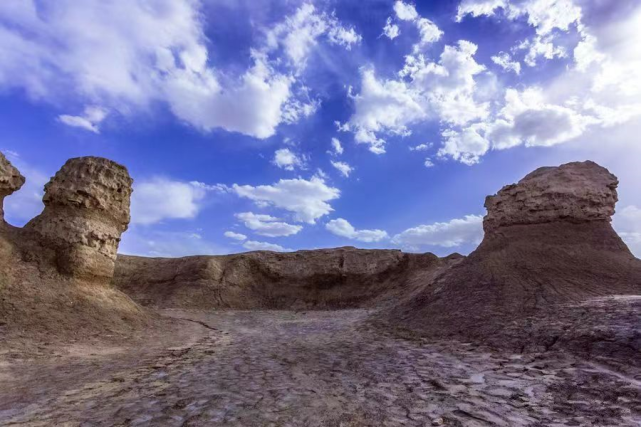
Aksu Tonggusi Baxi Chengzhi.
Nearby Attractions
After exploring Tonggusi Baxi Chengzhi, consider visiting these nearby sites:
– Tianlai Jiayi Scenic Area: A cultural park showcasing local heritage, traditional music, and handicrafts, approximately 30 minutes from the fortress.
– Yuqikate Ancient City: Another historical site, known for its well-preserved ruins and cultural significance, located nearby.
– Desert Flower Sea: A unique ecological area combining desert landscapes with seasonal flower blooms, perfect for picturesque photos.
Local Cuisine
Don’t miss the opportunity to indulge in local Xinjiang cuisine while in Aksu. Signature dishes include:
– Braised Pigeon: A local delicacy that is tender and flavorful, seasoned with a blend of spices.
– Nang Bread: Freshly baked traditional flatbread, often served alongside meals.
– Various Lamb Dishes: Lamb is a staple in Xinjiang cuisine, with options ranging from skewers to hearty stews.
Travel Tips
– Best Time to Visit: The ideal time to visit is during spring (April to June) and autumn (September to October) when the weather is mild and pleasant.
– Dress Appropriately: As the site is primarily outdoors, wear comfortable walking shoes and dress in layers to accommodate temperature changes throughout the day.
– Stay Hydrated: Bring plenty of water, especially during warmer months, as amenities may be limited at the site.
– Respect Local Customs: As with any cultural site, be respectful of local customs and the integrity of the ruins. Avoid climbing on ancient structures or removing any artifacts.
By incorporating these practical tips and insights, your visit to Aksu Tonggusi Baxi Chengzhi will be both enjoyable and enriching, allowing you to connect with the rich history of this remarkable location on the Silk Road.
Tickets, Hours, and Booking
Visiting the Aksu Tonggusi Baxi Chengzhi, also known as the Ancient City of Tonggusi Baxi, is a captivating experience that immerses travelers in the rich history of the ancient Kucha Kingdom, a significant hub along the Silk Road during the Tang Dynasty. Here’s what you need to know about accessing this remarkable site:
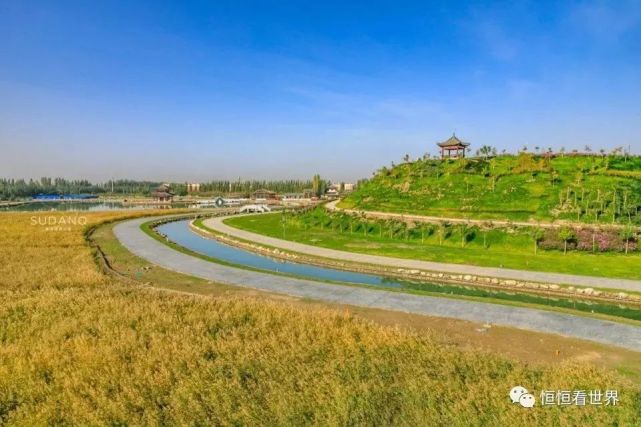
Aksu Tonggusi Baxi Chengzhi.
Ticket Information
-
Admission Fee: Entry to the Aksu Tonggusi Baxi Chengzhi is free of charge. This makes it an accessible destination for all visitors interested in exploring the historical and cultural significance of the site.
-
Opening Hours: The site is open to visitors year-round. However, it is advisable to check local conditions or any specific seasonal hours that may apply.
-
Location: The ruins are situated in the Paisenbaiza Township of Xinhe County, Aksu Prefecture, Xinjiang Uyghur Autonomous Region. The site is easily reachable by car or local transport from the nearby town centers.
-
Guided Tours: While self-guided exploration is encouraged, you may also find local guides available for hire near the entrance. These guides can provide valuable insights into the history and architecture of the site, enhancing your visit.
-
Accessibility: The ruins are designed to be accessible for most visitors, but it’s recommended to wear comfortable shoes as the terrain can be uneven.
Nearby Attractions
After visiting Tonggusi Baxi Chengzhi, consider exploring other nearby attractions to enrich your experience in the Aksu region:
- Yuqikate Ancient City
- Yuerun Tomb Group
- Various ancient beacon tower sites and Buddhist temple ruins
Tips for Visitors
- Best Time to Visit: The most pleasant times to explore the ruins are during the spring and autumn months when the weather is mild.
- Cultural Respect: As this is a historical and cultural site, visitors are encouraged to respect the surroundings and adhere to any posted guidelines during their visit.
A trip to Aksu Tonggusi Baxi Chengzhi is not just a journey through history but also a chance to appreciate the stunning landscapes that surround this ancient site. Enjoy your visit!
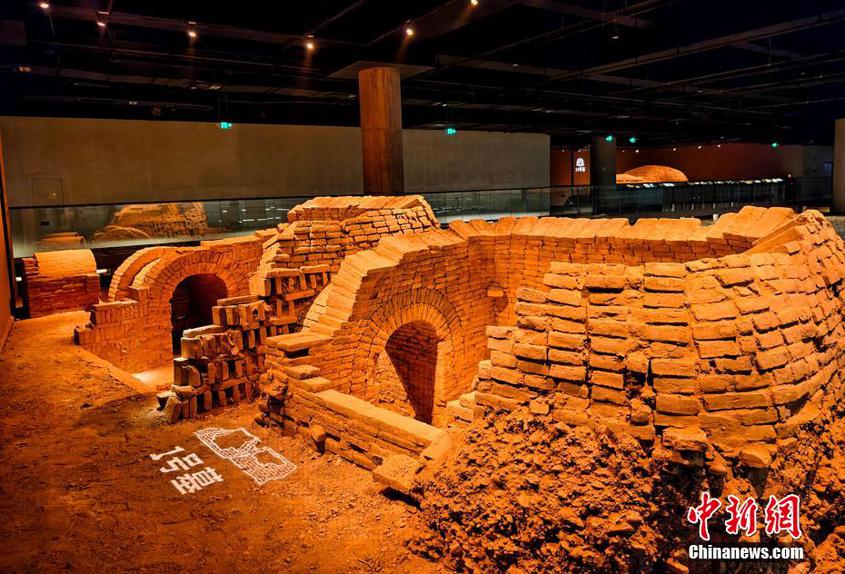
Aksu Tonggusi Baxi Chengzhi.
How to Get There
Getting to and around Aksu Tonggusi Baxi Chengzhi (通古斯巴西城址) in Xinjiang, China, involves a combination of regional travel options that connect this historical site to major cities and nearby attractions.
Accessing Aksu Tonggusi Baxi Chengzhi
By Air
The nearest major airport is Aksu Airport (AKU), which serves domestic flights from various cities, including Urumqi, the regional capital. From Urumqi, you can catch a flight to Aksu, which takes about 1.5 hours. Once you arrive at Aksu Airport, you have a couple of options to reach the historical site:
- Taxi or Ride-Hailing Services: Taxis are available at the airport, and ride-hailing apps like Didi can also be used. The journey from the airport to Aksu Tonggusi Baxi Chengzhi takes approximately one hour.
- Car Rentals: If you prefer to drive, several car rental services operate out of Aksu Airport. This option grants you the flexibility to explore the surrounding areas at your own pace.
By Train
Aksu is well-connected by train to several major cities in Xinjiang. The Aksu Railway Station provides services from cities like Urumqi, Kashgar, and Korla. The train ride offers beautiful views of the Xinjiang landscape, and the duration varies depending on your starting point:
- From Urumqi: The train journey takes around 12-15 hours.
- From Kashgar: Expect a travel time of approximately 12 hours.
Upon arriving at Aksu Railway Station, taxis are readily available to take you to Aksu Tonggusi Baxi Chengzhi, which is about a 30-minute drive away.
By Road
For more adventurous travelers, long-distance buses connect Aksu with several cities in Xinjiang. Buses are a cost-effective option, and the main bus station in Aksu serves various routes:
- From Urumqi: Buses run several times a day and take about 12-14 hours.
- From Kashgar: Direct bus services are also available, taking around 10-12 hours.
Once in Aksu, local buses and taxis can transport you to the historical site.
Local Transportation
Once you arrive at Aksu Tonggusi Baxi Chengzhi, exploring the surrounding areas can be done through various local transportation options:
- Walking: The site is relatively compact, making it feasible to explore on foot and appreciate the ancient architecture and landscapes.
- Bicycles: Renting a bicycle is a great way to cover more ground while enjoying the fresh air and the scenic surroundings.
- Guided Tours: Many local tour companies offer guided tours that include transportation to and from the site, often combining visits to other nearby attractions such as the Tianlai Jiayi Scenic Area or the Ushi Kete Ancient City.
Conclusion
Traveling to Aksu Tonggusi Baxi Chengzhi is straightforward, thanks to its accessibility via air, train, and road. Once there, you can enjoy the rich history and culture of the ancient region of Kuche while exploring the beautiful landscapes of Xinjiang. Whether you opt for a quick flight or a scenic train ride, your journey to this historical treasure will surely be an adventure to remember.
Local Cuisine and Accommodation
As you explore the historic wonders of Aksu Tonggusi Baxi Chengzhi, indulging in the local culinary delights and finding comfortable accommodations are essential parts of your journey. Here’s a guide to some of the best food and lodging options in the area.
Culinary Delights
New Harmony, or Xinhe County, is a treasure trove of authentic Uyghur cuisine, offering a range of flavors that reflect its rich cultural heritage. Here are a few must-try dishes:
-
Xinhe Braised Pigeon (新和卤鸽): A local favorite, this dish features pigeon that is marinated in a special blend of spices, resulting in a glossy, amber-colored skin. The tender meat boasts a perfect balance of flavors, thanks to the infusion of star anise and cinnamon, making it a delightful treat for meat lovers.
-
Naan Bread (新和馕): This traditional flatbread is a staple in the region. Freshly baked, it has a crispy outer layer and a chewy inside, with a rich aroma that harks back to the ancient Silk Road. Don’t miss trying the corn naan, which combines yellow cornmeal with wheat flour for a unique flavor and texture.
-
Cold Noodles (新和凉粉): A refreshing dish perfect for hot days, these transparent noodles are served chilled with a tangy sauce. The combination of vinegar and garlic creates a delightful balance of flavors that will cool you down.
-
Milk Pigeon Soup (新和乳鸽汤): Known for its nourishing properties, this rich soup is simmered for hours to extract the flavors of the pigeon. It’s a comforting dish that’s particularly satisfying after a day of exploring.
-
Lamb Skewers (羊肉串): Grilled to perfection, these skewers are seasoned with local spices and offer a smoky, savory flavor that’s hard to resist. They are perfect for a quick bite while on the go.
For a more upscale dining experience, head to Fei Ni Mo Shu Restaurant, where traditional dishes are creatively reimagined with a modern twist, combining local ingredients with international cooking styles.
Accommodation Options
When it comes to finding a place to stay, Xinhe County offers a range of accommodations to suit various preferences and budgets:
-
Xinhe Hotel (新和宾馆): A comfortable and centrally located hotel, Xinhe Hotel provides modern amenities, clean rooms, and friendly service. It’s a great base for exploring the surrounding attractions.
-
Tianlai Jiayi Scenic Area (天籁加依景区): This area not only offers beautiful views but also has guesthouses that give you a taste of local hospitality. Staying here allows you to immerse yourself in the local culture while enjoying a peaceful environment.
-
Aksu International Hotel (阿克苏国际大酒店): For those seeking a more luxurious experience, this hotel features well-appointed rooms, an on-site restaurant offering both local and international cuisine, and amenities such as a fitness center and conference facilities.
-
Traditional Uyghur Homestays: For a unique cultural experience, consider staying in a local homestay. These accommodations provide a chance to connect with the locals, enjoy homemade meals, and learn about the region’s customs and traditions firsthand.
Whether you’re savoring the rich flavors of Xinhe’s cuisine or relaxing in a comfortable room after a day of exploration, you’ll find that both the food and accommodations enhance your experience in this historic region. Enjoy your journey through the ancient sites and vibrant culture of Aksu Tonggusi Baxi Chengzhi!
Frequently Asked Questions
Frequently Asked Questions about Aksu Tonggusi Baxi Chengzhi (通古斯巴西城址)
1. Where is Aksu Tonggusi Baxi Chengzhi located?
Aksu Tonggusi Baxi Chengzhi is situated in the Xinhe County of the Aksu region in the Xinjiang Uyghur Autonomous Region of China. Specifically, it is located in the Pai Xian Bai Ba Zha township.
2. What is the historical significance of the site?
This ancient site served as a major military stronghold during the Tang Dynasty and was part of the Anxi Protectorate. It played a crucial role in the political, economic, and cultural development of the ancient Kucha region, making it a significant site for historical research.
3. What are the main features of the site?
The site features a square layout with an area of approximately 49,000 square meters. The city walls are about 6.2 meters high and constructed from tamped earth mixed with willow branches. Notable architectural elements include protruding wall turrets and horse face structures that were used for defense.
4. Is there an entrance fee to visit the site?
No, entry to Aksu Tonggusi Baxi Chengzhi is free of charge, making it an accessible destination for visitors interested in history and archaeology.
5. How do I get to Aksu Tonggusi Baxi Chengzhi?
Visitors typically reach the site by car or local transportation from the city of Aksu. It is advisable to check local maps or ask for directions from residents, as some routes may not be well-marked.
6. What can I expect to see at the site?
At Aksu Tonggusi Baxi Chengzhi, you can explore the remnants of ancient buildings, city walls, and artifacts such as wooden utensils and textiles that date back to the Tang Dynasty. The site provides a unique glimpse into the architectural and cultural practices of the time.
7. Are there any nearby attractions to visit?
Yes, several notable attractions are located near Aksu Tonggusi Baxi Chengzhi, including the Tianlai Jiayi Scenic Area, the Ancient City of Yuqikate, and various historical burial sites. These can provide a more comprehensive understanding of the region’s rich history.
8. What is the best time to visit?
The ideal time to visit Aksu Tonggusi Baxi Chengzhi is during the spring and autumn months when the weather is mild and conducive for outdoor exploration. Summers can be quite hot, while winters may bring colder temperatures, making it less comfortable for sightseeing.
Final Thoughts on Your Trip
In the heart of Xinjiang, Aksu Tonggusi Baxi Chengzhi stands as a remarkable testament to the rich tapestry of history and culture that defines this region. This ancient site, once a vital military stronghold during the Tang Dynasty, offers visitors a unique glimpse into the past, where the echoes of traders and travelers along the Silk Road still resonate. As you walk through the remnants of its walls and structures, it becomes clear that this is not just a relic of history but a vibrant symbol of the cultural fusion that has flourished here for centuries.
Beyond the ruins, the surrounding area of New Harmony County provides an abundance of experiences, from the captivating desert flower fields to the engaging local cuisine that showcases the flavors of Xinjiang. Each corner of this land tells a story—stories of perseverance, artistry, and the enduring spirit of the people who have called it home.
Visiting Aksu Tonggusi Baxi Chengzhi is more than just a journey through time; it’s an invitation to explore the deep-rooted connections between past and present. As you plan your trip, take the opportunity to immerse yourself in the rich cultural heritage, connect with the local community, and savor the diverse culinary delights that make this region a hidden gem. In a world that often rushes forward, Aksu invites you to pause, reflect, and appreciate the beauty of history intertwined with the rhythms of life today.
